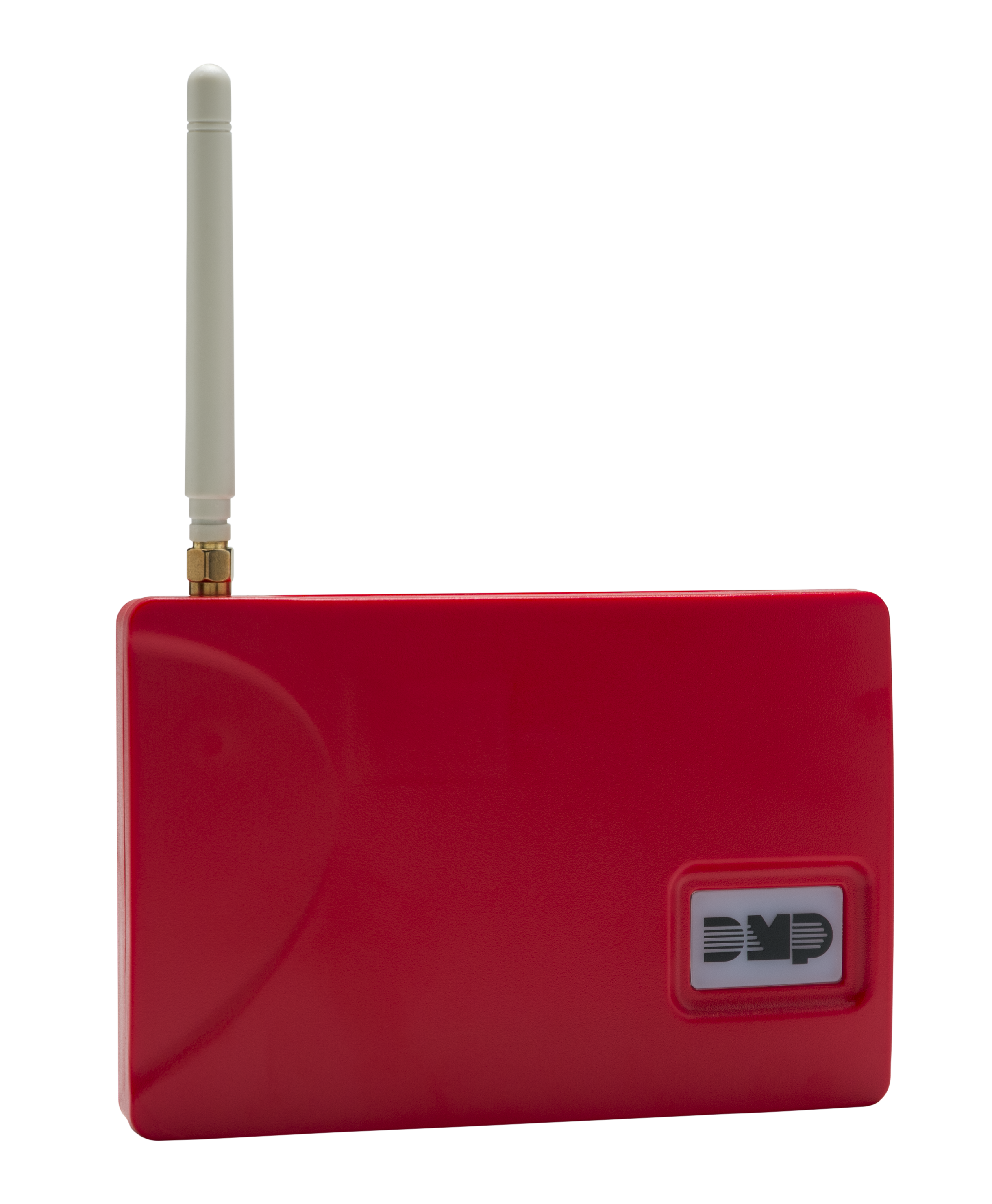With more and more residential accounts foregoing a traditional phone line in favor of cellular or VoIP, security dealers increasingly are installing alarm systems that use alternative forms of communications such as cellular, wireless mesh or Internet protocol (IP) communications over the customer’s broadband Internet connection.
For those who may be unfamiliar with them, wireless mesh systems are created when a dealer installs transceivers in multiple customers’ homes throughout a metropolitan area. Each transceiver communicates with a base station, typically located at the central station, and each transceiver can act as a repeater for other customers. This approach enables each customer’s communications to take any one of numerous paths to reach the central station, helping to ensure that communications are successfully completed.
How reliable are cellular, wireless mesh and landline broadband communications? In this article we explore that topic — as well as what dealers can do to maximize the reliability of these systems.
Uptime
When people think of reliability, they usually think first of network uptime: Can the network be counted on to function 24 hours a day, seven days a week?
Most of the people interviewed for this story say their confidence level is higher for wireless options than for options that rely on a wired network connection, at least in the residential market. Several sources note that although business Internet service is quite reliable, residential Internet service is particularly prone to random service interruptions.
Southfield, Mich.-based security dealer Guardian Alarm of Michigan offers systems with cellular, wireless mesh and broadband Internet communications, says Tom Furlong, operations manager for the company. Although Guardian Alarm considers both cellular and wireless mesh sufficiently reliable to be the sole communications method for residential accounts, salespeople advise any customer asking for Internet communications to use a second type of communication — such as cellular or a traditional phone line — as a backup.
If the customer balks at the cost of the two communications paths, Guardian will install an Internet communicator alone, but as Furlong explains, “We require them to acknowledge on a disclaimer that they are declining to back up the Internet with wireless communications.”
The alarm industry’s confidence in cellular communications might seem surprising to cell phone users who have experienced numerous dropped calls or poor sound quality. Sources say the difference is that, unlike mobile users, alarm communicators do not change position. Once a system is installed in a location with good reception, service should be reliable, they say.
Even if a signal fails to get through on the first try, the communicator will keep trying, notes Shooter Stein, president of Nashville-based security dealer National Certified Alarms (NCA). “After a few more seconds it will try again,” he says, which normally means that within seconds the signal will get through.
2G Service Degradation
It’s worth noting, though, that security dealers in certain markets are beginning to see some degradation in cellular communications because of changes made to cellular networks by the wireless phone companies. Sources at three different manufacturers — including Melville, N.Y.-based Honeywell, Chicago-based Telular, and Toronto-based Tyco Security Products — outlined the same scenario, which all three say they are beginning to see.
What’s happening is that most of today’s cellular alarm systems use second-generation cellular technology, known as 2G. However, wireless carriers already have begun to deploy 3G and 4G technologies that provide faster data rates and as more wireless phone customers move to the newer networks, the demand for 2G decreases. Accordingly, some wireless carriers are beginning to repurpose spectrum originally used for 2G to support 3G and 4G instead. They are not shutting down 2G — and aren’t expected to for several years (see related story, “A 2G Sunset,” on page 84). However, in some markets, carriers are reducing the amount of network capacity dedicated to 2G.
In addition, some wireless carriers have deployed 2G in two different spectrum bands — 800 MHz and 1900 MHz. Because of the lower frequency, devices operating in the 800 MHz band tend to be better at penetrating walls and providing indoor coverage. Accordingly, alarm communicators that are capable of operating at either frequency will tend to favor the 800 MHz band. But in some markets mobile operators already have begun to repurpose the 800 MHz spectrum previously used to support 2G, using it instead for 3G or 4G, and moving all 2G traffic to the 1900 MHz band.
The upshot is that cellular alarm communicators that worked fine at 800 MHz may not have the same signal strength at 1900 MHz — and in some cases this can impair alarm communications.
The good news is that any security dealers encountering this problem now have or soon will have the option of replacing 2G communicators with communicators operating at 3G or 4G. If the newer technology is not yet available, another option for addressing the problem may be to reposition the 2G radio or to add an antenna to enhance signal reception.
Supervision Is Key
Issues such as these are one reason that some security dealers choose wireless mesh. Lynn, Mass.-based security dealer Wayne Alarm sells both wireless mesh and cellular systems, but prefers to steer customers towards wireless mesh because it gives the company more control, notes Jim Keighley, technical operations manager for Wayne Alarm.
With cellular, Keighley thinks, “you get pockets of dropped coverage — it’s a challenge that you can’t put your finger on.” If the company uncovers any coverage problems with wireless mesh, then its own people can diagnose and address the problem, he says.
Whatever type of communications technology a company uses, it is a good idea to have a means of regularly confirming the integrity of the customer’s communications link. Guardian, for example, programs all of its systems to check in with the central station at least once a month and to generate an alert at the central station if a system fails to check in.
Some alarm communicators can be programmed to support very frequent check-ins, just minutes apart; however, dealers may have better results with settings in the one-hour to four-hour range, advises Tom Mechler, product marketing manager for Fairport, N.Y.-based manufacturer Bosch Security Systems Inc. Mechler notes, for example, that a cellular operator may take a tower down for 20 minutes or so, and “by adjusting the way the device communicates you can get past nuisance trouble events that aren’t a problem.”
Dealers also can mitigate the impact of nuisance alarms by adjusting both the check-in time and the fail time, advises Brad Tucker, TITLE, for Springfield, Mo.-based manufacturer Digital Monitoring Products.
Other Reliability Factors
Uptime isn’t the only factor that impacts system reliability. Other concerns include how vulnerable various technologies are to sabotage and to power outages — and here, too, sources interviewed for this article see advantages to wireless options.
“The most important sales pitch for wireless is that it increases security for the system,” Stein comments. “It eliminates human error and sabotage.”
Like a traditional phone line, a wired broadband connection can be cut; because the Internet communicator must connect to the customer’s DSL or cable modem, there is the potential that the customer will inadvertently compromise the connection by reconfiguring the equipment. Wishing to avoid these risks, NCA does not use IP communicators for residential accounts, Stein says.
Proponents point out another advantage of wireless communications over Internet-based alternatives. Wireless alarm communicators are powered by the alarm system’s backup battery, enabling them to continue to function in the event of a power outage. Alarm communicators that rely on an Internet connection often will not function when there is a power outage because the broadband modem often does not have battery backup.
“If the power goes out, you lose your IP connection,” comments Robert Wong, product line manager for security for Carlsbad, Calif.-based manufacturer Linear LLC.
To address this limitation, security dealers either should add backup power to the modem or provide a backup communications method.
Advice From the Pros
What can security dealers do to maximize the reliability of wireless and Internet communications?
An important consideration for a cellular system is to make sure that the system is installed in an area with excellent signal strength. Some manufacturers offer signal strength testers to simplify this process.
Don’t install a cellular communicator in an area with marginal coverage, Mechler advises. “If you have just enough coverage at that time, you can anticipate you will have trouble in the future,” he observes. To maximize security, Mechler says dealers should consider backing up a cellular connection.
“We’ve heard about black market cell blockers being used in break-ins,” he comments. “That’s why two forms of communication is a good idea.”
For wireless mesh systems, one of the greatest challenges is to ensure that the first few customers have sufficient coverage. Dealers initially may want to install some systems in employees’ homes in different neighborhoods, suggests Tom Kenty, general manager for Peabody, Mass.-based wireless mesh equipment manufacturer AES-IntelliNet. “They can be redeployed as the network expands,” Kenty adds.
As previously discussed, security dealers installing communicators that work over a broadband modem will want to provide backup power for the modem and should consider a backup communications method. Lou Fiore, chairman of the Alarm Industry Communications Committee — an industry organization focused on regulatory and other alarm communications issues — offers another suggestion for enhancing the reliability of alarm communications that rely on a landline Internet connection. The central station should have multiple paths to the Internet, he advises.
Line Security & Commercial Fire Options |
|
When alarm manufacturers began to offer communicators based on 2G cellular data, wireless mesh and landline broadband connectivity, they opened up new possibilities in supervision of the communications link. Today, according to manufacturers, each of those technologies is Underwriters Laboratory-approved for use on certain products in commercial fire installations without a backup communicator. In addition, certain products using 2G cellular and landline broadband communications are approved as the sole communications method for high-security installations such as jewelry stores that require line security, manufacturers say. To meet installation requirements, approved products must be programmed to check in with the central station at frequent intervals. According to Shawn Welsh, vice president of marketing and business development for Telular, the requirement for commercial fire installations is every six minutes and for line security it’s every 200 seconds. Other requirements also apply. Dealers should check specific local codes for details. |
A 2G Sunset? |
|
Almost all of the cellular alarm communicators on the market today use GPRS communications, a second-generation (2G) wireless technology supporting digital data communications that is offered by two nationwide wireless network operators — AT&T and T-Mobile. According to several alarm manufacturers, both carriers eventually plan to shut down their 2G networks. AT&T’s planned transition date is “toward the end of 2016” while “T-Mobile will keep it going until 2020,” observes Shawn Welsh, vice president of marketing and business development for Telular. Both carriers have widely deployed 3G networks based on HSPA technology that supports higher data rates. The carriers also have made substantial deployments of an even faster HSPA+ service, which many consider to be a 4G technology. As data speeds have increased, so has data consumption; as a result, carriers are seeking to add more capacity to their 3G and 4G networks. To do that, carriers want to repurpose spectrum that currently supports 2G, which has seen decreased demand from mobile users now that the newer technologies are available. Several alarm manufacturers recently released or soon will release cellular communicators that can use 3G or 4G communications and they are advising dealers to install those systems, rather than the 2G products, moving forward. What about the installed base of 2G users? Some already may be experiencing performance degradation as wireless carriers already have begun to convert some 2G spectrum and already may need a replacement communicator. (See main article beginning on page 83.) Even if a customer’s 2G communicator still works fine, the dealer may want to consider replacing it on the next visit to the account. Whether or not the customer should be expected to pay for the upgrade may depend on individual circumstances. “Try to look at the value a particular customer is bringing to you from a [recurring monthly revenue] basis and judge how long you want that customer to be with you beyond 2016,” Welsh advises. It may be worth investing the equivalent of a few months of recurring monthly revenue in order to position the customer to have reliable service after the wireless carrier begins its network conversion, he says. Mike DeMille, director of product management for Toronto-based Tyco Security Products, offers a different take. The advantage of later-generation wireless services is that because they support higher bandwidth, they also can support a wider variety of interactive monitoring services that provide added value for customers, DeMille describes. “Suggest moving customers to a new feature set that will help justify the change in the radio,” he advises. Some manufacturers have offered interactive monitoring — such as the ability to receive a text message on a cell phone when a child gets home from school — with 2G systems. But DeMille notes that 3G has enough bandwidth to enable customers to receive video clips. Dealers may be better able to prepare their customers for future transitions by explaining the eventual changes by carriers up front, notes Dean Mason, senior communications product manager for Honeywell. This would help educate the consumer and also enhance the reputation of the dealer as they are explaining the potential for future change early on in the relationship. The dealer also may wish to develop an upgrade agreement with the customer so that the customer will know future swap costs at the time of the initial radio installation, Mason explains. Honeywell has addressed this technology change with its new IntelliPath solution that automatically switches the radio from 2G to 3G or 4G automatically when the existing GSM signal on the premises changes. |
Cable Voice Now May Be an Option |
|
It’s been about a decade since substantial numbers of homeowners first began to drop traditional phone service, moving instead to a service bundle from the cable company that included digitized voice service. When the shift first began to occur, it was highly disruptive for security dealers because alarm communicators didn’t work as well over the cable company’s voice service as they did over a traditional phone line. In some cases, they didn’t really work at all. But today, cable voice service actually may be an option for supporting alarm communications, explains Lou Fiore, chairman of the Alarm Industry Communications Committee. In order to properly support alarm communications, a cable company must support a set of standards called “managed facility voice networks” (MFVN), which have been recognized by the National Fire Protection Association. Key MFVN requirements include eight-hour battery backup, proper disaster recovery planning, and proper signaling, Fiore says. A fourth requirement is the ability to properly signal to the control panel in the event that the broadband connection to the premises is lost. Not every cable company supports MFVN. But as Fiore explains, at least now cable companies know what they need to do to correct any problems with alarm communications that may arise on their networks. |










